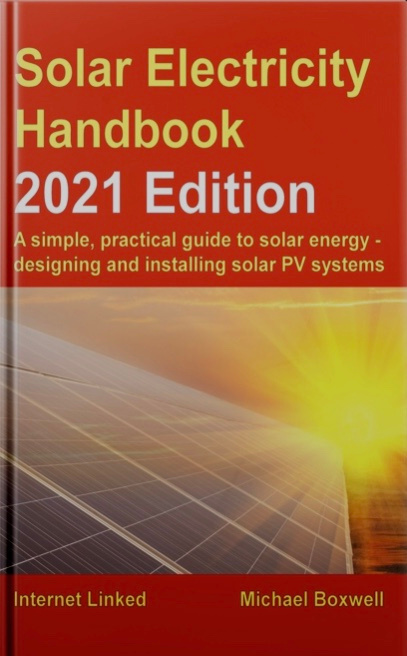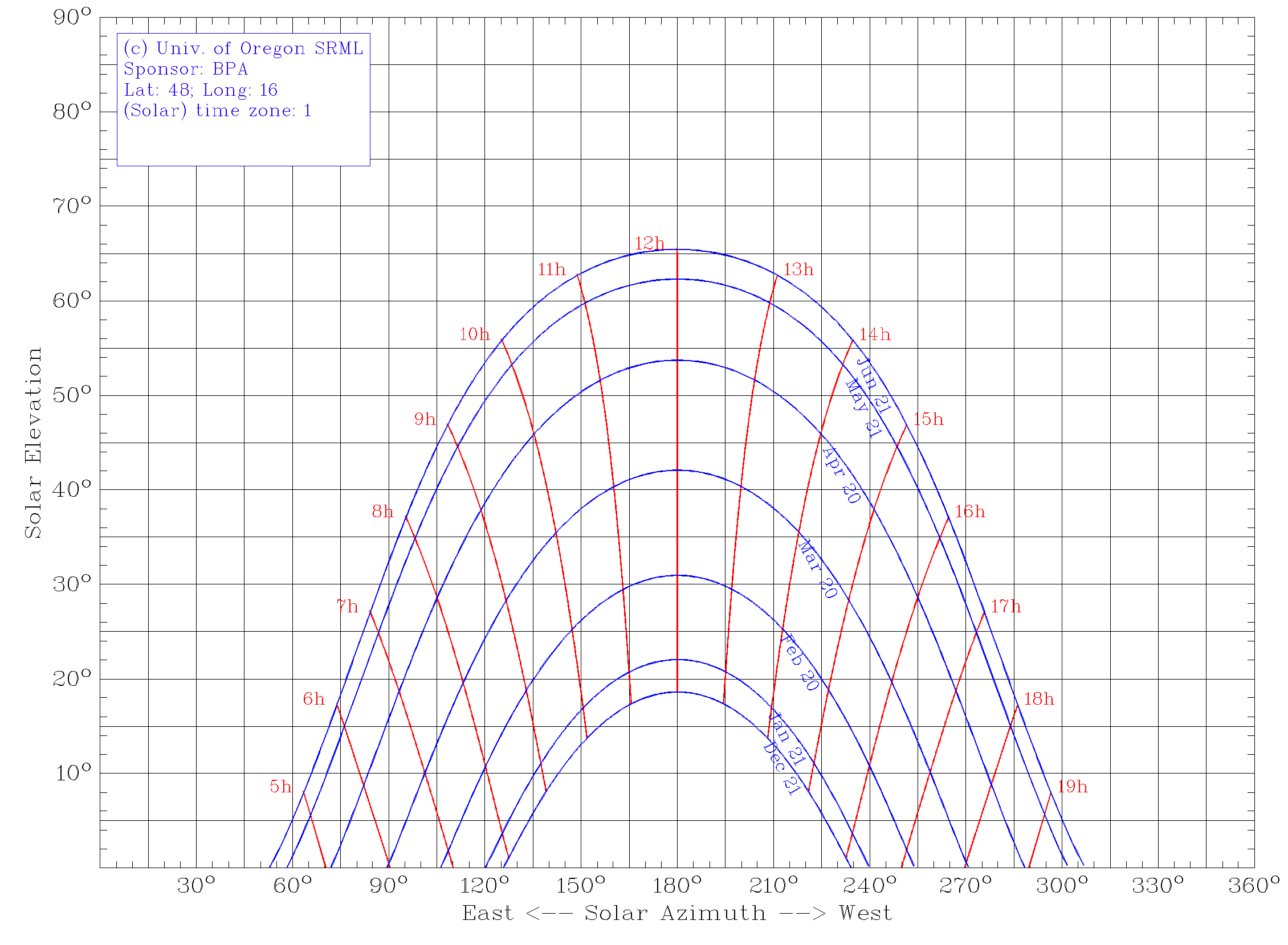2022-04-24T16:43:00

Solar Electricity Handbook
Here are my notes from book "Solar Electricity Handbook - 2021 Edition - A simple, practical guide to solar energy - designing and installing solar PV systems" by Michael Boxwell.

While I learn many things from this book it's kind of mixed writing. Anything beyond 2 panels for small garden shed is 100 times commented in the book as to better leave that to a professional with many repeating safety precautions for each and every component. So my impressions is that the author is writing to Photovoltaic enthusiasts with message to hire a company to do it for them because it's dangerous and professionals make it better, safer and faster anyway...
- p73 To calculate the optimum tilt of your solar panels, you can use the following sum: 90° - your latitude = optimum fixed year-round setting (so for Vienna it should be 90-48 = 42°)
- p107 you can download world wide sun charts from the University of Oregon Solar Radiation Monitoring Laboratory web site at http://solardat.uoregon.edu/SunChartProgram.php
- If you are spending a lot of money buying a solar energy system that needs to last many years, it is advisable to purchase from a known brand such as Eco Future, Kyocera, Panasonic, Hyundai, Mitsubishi, Solar Frontier or Sharp. My personal recommendation is Eco Future monocrystalline solar panels, or Solar Frontier amorphous panels. I have found these to be particularly good.
- p137 Mounting systems must also ensure there is adequate ventilation behind the panel to avoid excessive heat build-up. If you are using smaller solar panels – up to around 100Wp panels – an air gap of around 2 – 2½cm (3/4 – 1 inch) is sufficient. For larger panels, an air gap of 5 – 8cm (2 – 3 inches) is usually recommended.
- p138 For most solar panels, the standard connector is MC4 connector.
- p143 For anything larger than 100Wp solar panel systems, and for all systems mounted to a building, you should install ground fault protection (RCD for DC) between your solar panels and your controller or inverter.
- p162 the required cable size using the following calculation:
(L x I x 0.8) ÷ V = CT→ L - Cable length in metres (one metre is 3.3 feet), I - Current in amps, V - System voltage (e.g. 12V or 24V), CT - Cross-sectional area of the cable in mm². So calculating the cable thickness for a 12-volt system: (22m x 14.08A x 0.8) ÷ 12V = 20.65mm². Calculation for a 24-volt system: (22m x 7.04A x 0.8) ÷ 24V = 5.15mm². - p193 Victron, Growatt and Iconica all supply combined controller/inverters. I have personally used Victron and Iconica solutions and found them very effective for off-grid applications.
- p200 Solar panel manufacturers and brands: Atlantis Energy, BP Solar, Canadian Solar, Clear Skies, EPV, Evergreen, Conergy, G.E. Electric, Hitachi, ICP, Kaneka, Kyocera, Mitsubishi, Power Up, REC Solar, Sanyo, Sharp, Solar World, Spectrolab, Suntech, Uni-solar.
- p200 Solar controller and inverter manufacturers and brands: Apollo Solar, Blue Sky, Enphase, Ever Solar, Exeltech, Fronius, Kaco, Magnum, Mastervolt, Morningstar, Outback, PowerFilm, PV Powered, SMA, Solectria, Sterling, Steca, SMA SunnyBoy, Victron, Xantrex.
- p200 Battery manufacturers and brands: East Penn, Chloride, Crown, EnerSys, Exide, Giant, GreenPower, Hawker, ManBatt, Newmax, Northstar, Odyssey, Optima, Panasonic, PowerKing, Tanya, Trojan, US Battery, Yuasa.
- p212 If you are using both AC electrics and DC electrics in your system, you must always have a separate ground for each system.
- p221 When wiring batteries together in parallel, it is important to wire them up so that you take the positive connection off the first battery in the bank and the negative connection off the last battery in the bank.
- p229 look for cable that conforms to the UL 4703 or UL 854 (USE-2) specification for PV cabling.
- p247 connect positive and negative cables from the solar array together to short-circuit the array. This will not damage the array and could prevent a nasty shock.
